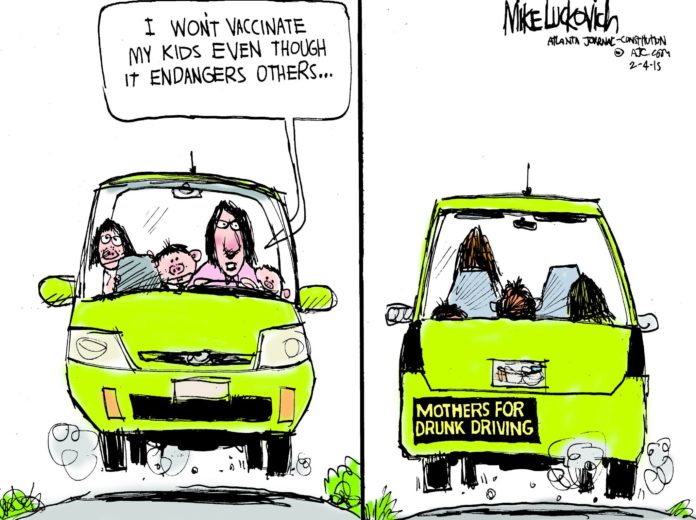BY DAVID PERRYMAN
 For a two-year span beginning in 2001, NBC television brought us The Weakest Link, an adaption of a popular British game show. The program involved questions posed to a panel of contestants who eliminated opponents. A prominent part of the show involved a rather unpleasant host who seemed to delight in declaring the name of the eliminated contestant followed by the phrase, “you are the weakest link.”
For a two-year span beginning in 2001, NBC television brought us The Weakest Link, an adaption of a popular British game show. The program involved questions posed to a panel of contestants who eliminated opponents. A prominent part of the show involved a rather unpleasant host who seemed to delight in declaring the name of the eliminated contestant followed by the phrase, “you are the weakest link.”
The demeaning host and the show are no more; however, we are faced with a weakest link scenario that can be epidemic and involve life and death situations. An examination of a concept called “herd immunity” discloses why 17 states are currently experiencing outbreaks of measles, a vaccine-preventable disease.
Herd immunity exists when the vaccination of a significant portion of a population provides protection to those who have not yet developed immunities or who have not been vaccinated. The concept is simple: The higher the vaccination rate, the less likely it is that an unvaccinated person will come into contact with an infectious person.
So how does the “weakest link” play into this discussion of vaccine-preventable diseases?
According to a paper issued by the Centers for Disease Control and the World Health Organization, the “herd immunity threshold” or the percentage of the population that must be immune from measles to protect the non-immune is 94%. No other vaccine-preventable disease has a higher herd immunity threshold and no other vaccine-preventable disease may be transmitted by airborne means without droplets being present.
Consequently, a measles outbreak is likely an the earliest accurate indicator of a decrease in immunization. Diseases like Diphtheria, Mumps, Polio, Rubella and Smallpox all have lower herd immunity thresholds around 85% to 86% and, therefore, substantial outbreaks would likely not be epidemic until the immunization rate drops to that rate.
Another vaccine-preventable disease that has a high herd immunity threshold comparable to measles is Pertussis. Pertussis transmission requires airborne droplets and is, therefore, slightly less contagious than measles, but costly in Oklahoma. According to the Oklahoma State Department of Health [OSDH] statistics, 125 Oklahomans were hospitalized with Pertussis between 2010 and 2014 at a cost of over $1.25 million, not including physician fees, supply costs or intensive care.
School laws play a key role in reducing these diseases and thanks to the dedication and persistence of OSDH, our vaccination rates have been historically high despite the fact that Oklahoma law allows a parent to exempt their child from vaccination. Since vaccines are one of the most cost-effective public health interventions available – saving $10 for every dollar spent – it is imperative that parents keep those rates high despite irresponsible statements made in the political arena.
A Feb. 3 Huffington Post article stated that, “Republicans on a House Energy and Commerce subcommittee on Tuesday broke with the vaccine skepticism expressed by some of their potential 2016 presidential candidates, using a hearing with top medical experts to push back against myths surrounding vaccinations.”
Rep. Tim Murphy, R-PA, chair of the Oversight and Investigations Subcommittee and Rep. Marsha Blackburn, R-TN, are both to be commended for acknowledging that it is disgraceful that vaccination rates in Sudan and Chad are higher than in some parts of the United States.
Hopefully the recent measles outbreak will serve as a solid reminder that vaccination is the only way to achieve herd immunity and herd immunity represents the ultimate Common Good.
– David Perryman, a Chickasha Democrat, represents District 56 in the Oklahoma House of Representatives







